
Interview with ceramic artist Yuko Sugama (Iga, Mie Prefecture)
Share
I met Sukuma Yuko during a brief sunny day during the short autumn season.
He moved to a place known for Iga ware and started making pottery there. We asked him about his thoughts on the matter.
I would be delighted if you would read to the end and then take another look at the work.

Please tell us how you first encountered pottery.
My name is Yuko Sukama and I was born in Saitama Prefecture.
I loved arts and crafts since I was in elementary school, and would make flower pots out of chopsticks.
A turning point in my life came when I was in the fifth grade of elementary school!
Due to my father's work, my family moved to Aceh, Indonesia.
It was a rural area where only Cessna planes fly. There was a Komodo dragon-like thing crawling around in front of the house .
It was really exciting, going to an international school in Indonesia (classes were in English!), in-line skating, and playing in the mountains during orientation.
Pottery is also popular in Aceh, and people there make things.
After returning to Japan and graduating from junior high school, his life suddenly changed again!
After entering high school, I decided to move to Singapore for three years!
Before I knew it, thanks to the pottery classes I attended with my mother during my time in Singapore, I had come to think of making things as "pottery."
After returning to Japan, I enrolled in the Department of Philosophy at Toyo University.
I like reading philosophical writings and thinking about strange things (laughs).
During my student days, I was involved in making things through experiences in pottery and glass making, and I also enjoyed traveling as a hobby.
I have traveled the world, sometimes wearing traditional costumes, to places like India, Vietnam and Turkey.
I worked for a travel agency and as a tour conductor for about three years. There were a lot of different experiences, but I won't go into detail here as it would take too long .
The passion for creating things had always been in my heart, and I decided to pursue a career as a potter, so I enrolled in the ceramics department at Kyoto College of Traditional Crafts, where I studied for three years.
I was so determined that I even had a piece of paper on the wall of my apartment that said, "I'm going to be a potter!" (laughs)
I was so impressed when I came across the work of ceramic artist Hiroshi Tanimoto at the Iga Pottery Festival that I was lucky enough to apply for a job offer and became his apprentice.
Please tell me about being an apprentice to a ceramic artist.
He became an apprentice under Master Hiroshi Tanimoto and moved to Iga City, Mie Prefecture.
In the morning, I walk the dog, clean, and weed the lawn for about an hour. One hour! Weeds have amazing vitality, so don't underestimate them.
They never use herbicides, but simply pull out the grass by hand, especially the grass between the stones.
I started living there midway through my stay and was put in charge of breakfast. After breakfast, I worked in the studio and gallery.
My master is focused on pottery making, so I support him in both his work and personal life so that he can create smoothly.
I learned by peeking at my master's pottery making in the studio. After work, I made pottery based on his comments on the pieces he showed me.
Most students graduate after three years, but due to various circumstances, I stayed for 13 years (laughs).
I didn't have the chance to use the potter's wheel together with my teacher, but towards the end I was able to learn from watching him film the pottery making process.
I was then taught that I needed to gradually shift my work to one where I could earn my own money, and so I began taking steps towards independence.
What kind of land is Iga?
Well, first of all, the mountains are close. And the clouds are close.
That being said, I am impressed every day by the beautiful scenery. I am also impressed by the richness of the four seasons.
However, there are a lot of insects from spring to autumn, which is a bit of a problem .
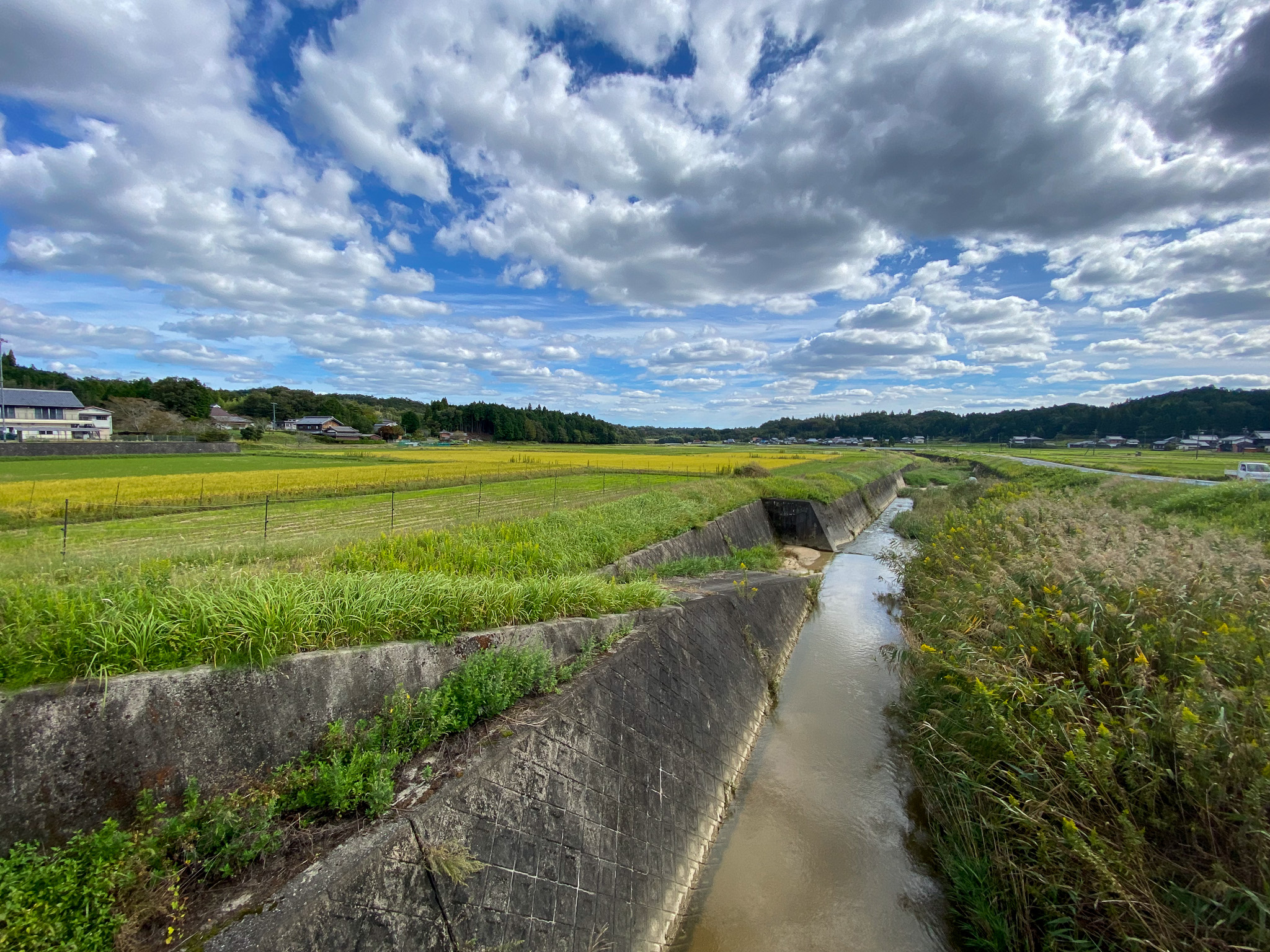
Iga has four distinct seasons. So, what is your favorite season?
My favorite season is summer.
Perhaps because I've spent a long time in Southeast Asia, the workshop is air-conditioned and the water is a comfortable temperature.
I like winter too. But the earth is so cold that my hands get red! I have to warm my cold hands up with hot water ... and then I have to keep doing that.
I like the sense of the seasons that I get during the short time it takes to walk from my home to my studio.
Thankfully, there are many events and outings in spring and summer, so it's more of a time to be outside. I especially enjoy talking to customers directly at events, and it gives me hints and ideas for my next work.
Summer and winter are the seasons to realize the ideas you have saved and the things you have wanted to make.
I like it because I can immerse myself in my work for long periods of time, create the works I want to create, and take the time to reflect on myself.
Also, I get hay fever in the spring (laughs).
What kind of work do you make?
I mainly make tableware, tea utensils, flower vases, sake utensils, and flower pots.
In the future, I would like to make traditional tea utensils.
Next year I plan to hold my first solo exhibition in Kyoto since becoming independent.
Base operates an online shop called Ugama where you can purchase products.
The flowerpot is OMBLE Please purchase through us!!
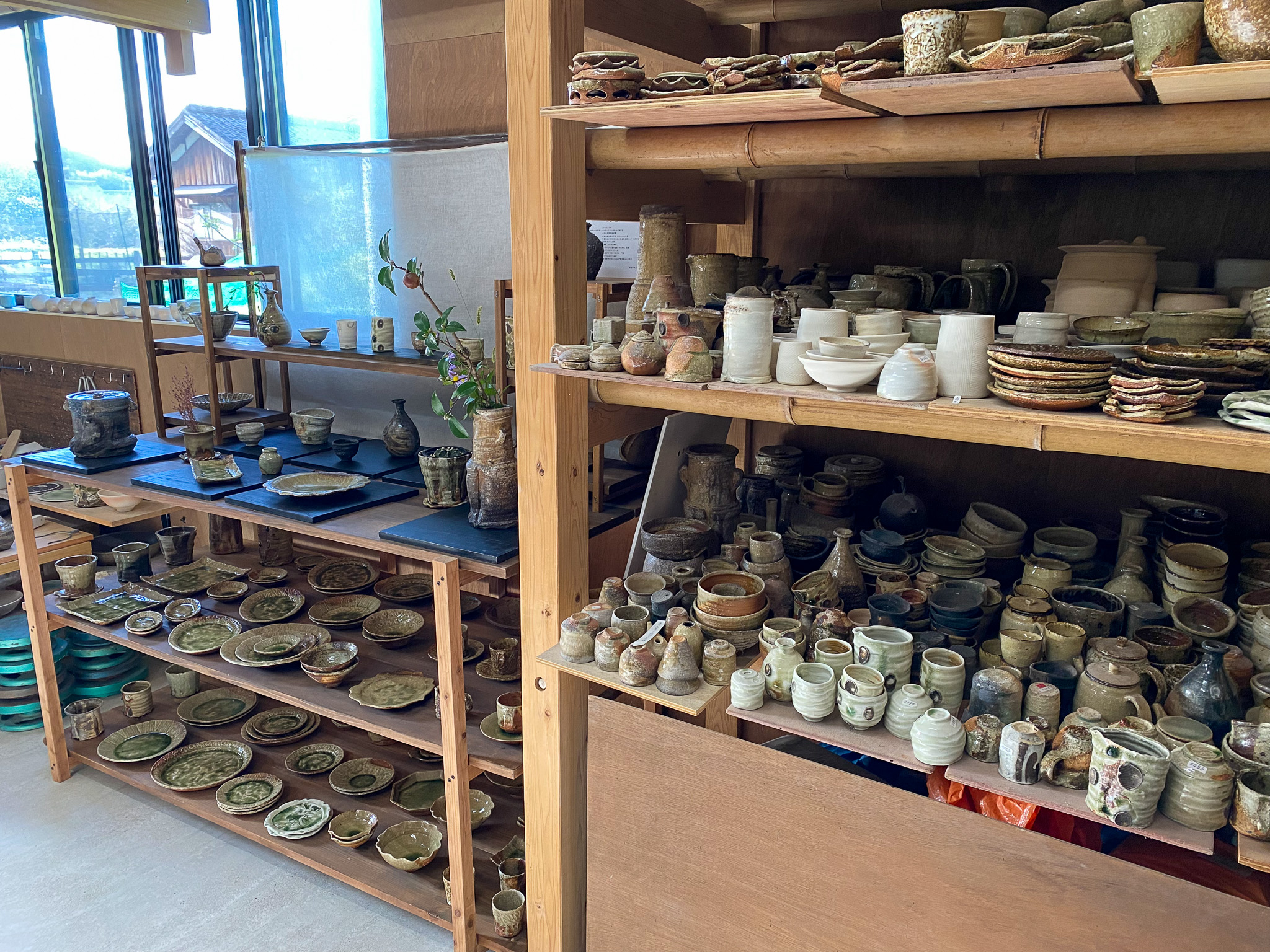
Please tell me the process of making pottery and the characteristics of Iga ware.
Yes, I am learning and making Iga ware.
Iga ware is pottery made using clay from Iga, and the parts that are covered in ash from the firewood (red pine) melt and change in the kiln, creating a unique "scenery."
The unique scenery is what makes it so appealing.
The process for making pottery involves using white clay in most cases, but Iga clay is also used, and the pieces are shaped by hand or on an electric potter's wheel, and then carved after drying.
After bisque firing, the piece is poured with red pine ash dissolved in water while imagining the final result, and then fired in a kerosene kiln.
When firing in a smokeless kiln, the pottery is fired in a wood-fired kiln without any coating after bisque firing. No glaze is used.
What we would like you to see is the unique scenery of Iga ware, the color of the Vidro, and the overall beauty of the distortions, patterns, ash covering, and scorching.
Iga ware is also often referred to as the "beauty of unbalanced harmony." After being beautifully shaped, the piece is broken and distorted to achieve balance.
(Note: Made using Iga clay, which contains lignite that has accumulated in Lake Biwa, and red pine as fuel, these pieces feature unique designs such as spatula marks, pressed shapes, and ears, as well as the beauty of irregular shapes that have been distorted through manipulation. The green glass-like Vidro formed from melted ash, the ash covering, scorches, and cracks all appear to be the result of natural changes in the kiln, but the artist anticipates these when firing. Designated a traditional craft by the national government in 1982. )
Please tell us about the "smokeless kiln" that you built.
A smokeless kiln is a wood-fired kiln that is smokeless, produced by burning off impurities through the secondary combustion of graphite.
Fascinated by Iga ware, he became an apprentice and vowed to "have my own kiln someday!" After going independent, he finally built his ideal kiln.
It was completed at the end of July this year, 2022, and was fired for the first time in August.
The first time I fired the kiln, I was so impressed! I was so impressed! When it became smokeless, I was so impressed! It really was like, no smoke at all!
Although it is my own kiln, the firing method and loading method are different from other kilns, so I received advice from my master.
When the smoke-free tank was gone and the final work was finished, I was so moved that I burst into tears .
Smokeless kilns have a track installed at the top of the furnace, and when the temperature reaches 900 °C to 1100 °C , graphite undergoes secondary combustion inside the track, completely eliminating the smoke.
Even when it reaches that temperature there is very little smoke.
Iga ware is usually fired for about three days, but due to the structure of the smokeless kiln making use of secondary combustion, it is fired for about two days due to better thermal efficiency.
This saves time and also saves on precious firewood. After that, the work is cooled for about two days before being removed.
I enter the kiln, but there are holes in various places in the kiln for adding firewood, so it's not scary and the unloading process is also safe.
It was designed and constructed by a palace carpenter, and is said to be the third of its kind in Japan, following a prototype by a palace carpenter and one by a potter in Nagano.
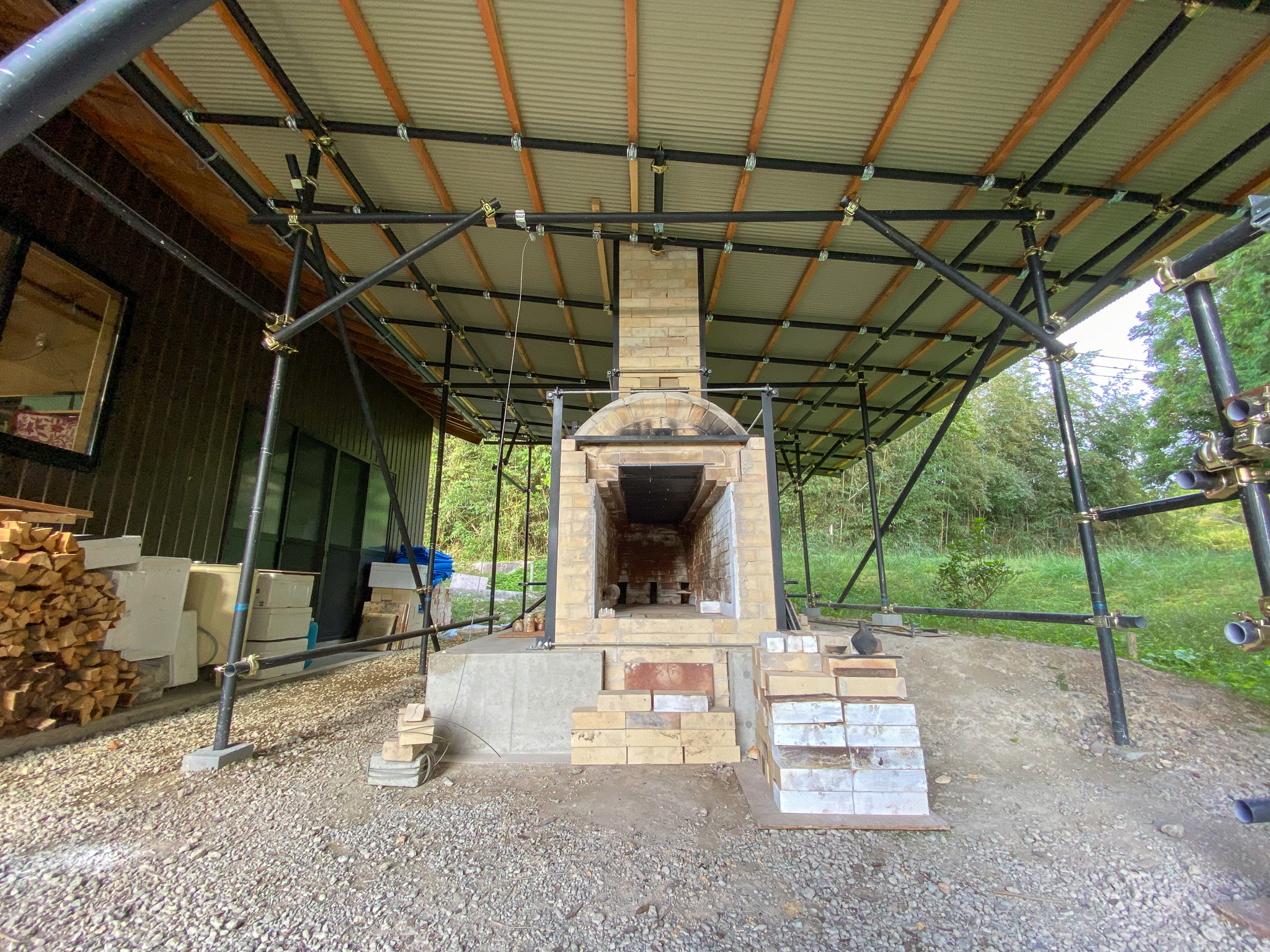
Why are you so committed to smokeless kilns?
The pottery is made using Iga clay, water, and firewood.
Since resources are limited, I want to be as environmentally friendly as possible through my work.
For example, use soap and avoid spraying herbicides.
I hope that smokeless kilns can contribute even a little to decarbonization, and that we can use firewood more efficiently.
In the future, I plan to reuse the ash produced during the firing of my smokeless kiln and use it in my works.
My goal next year is to do it five times.
There are so many things I want to try, so I need to fire it regularly and make it my own kiln.
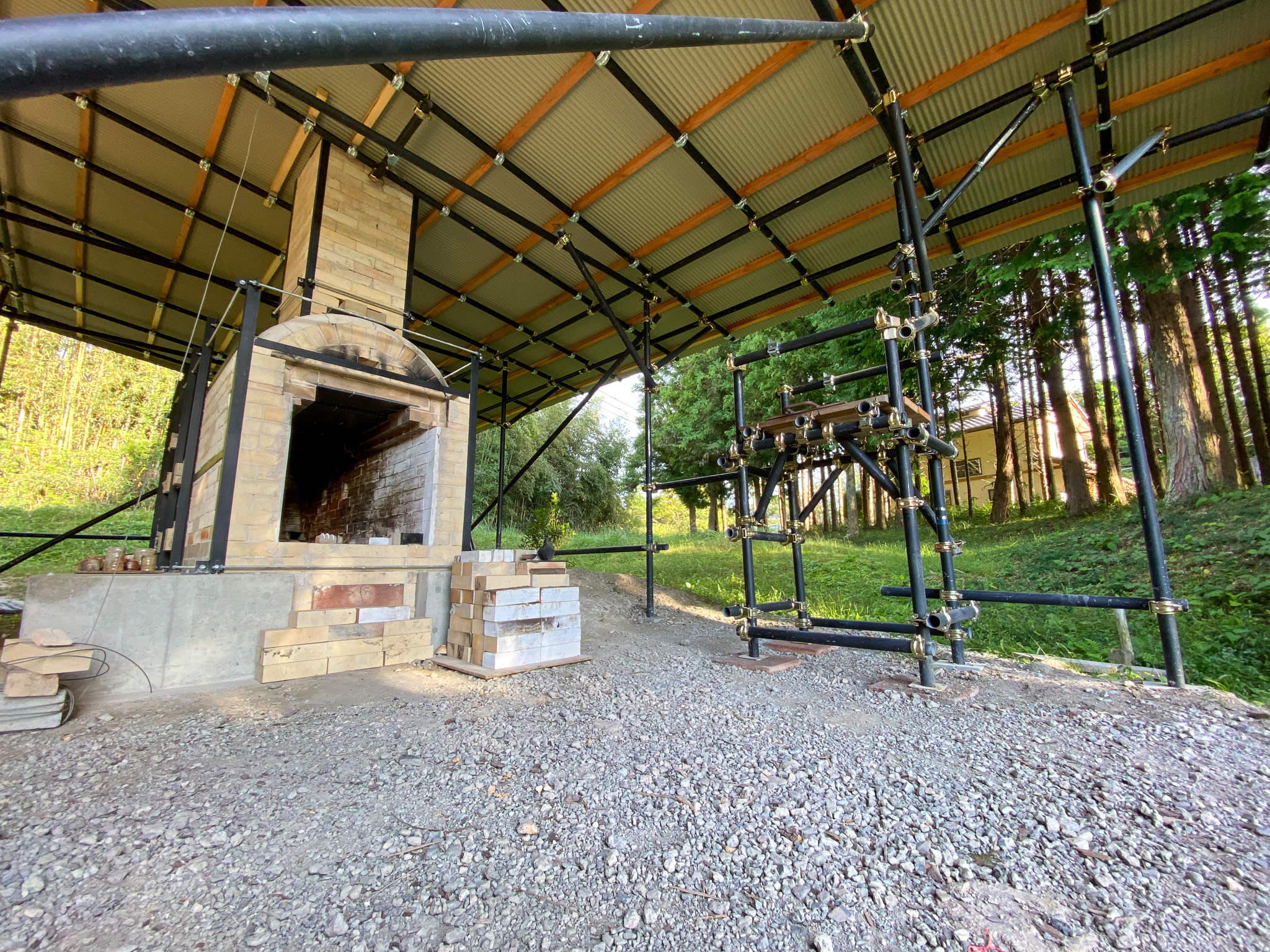
Thoughts on flower pots
As I mentioned earlier, we hope you enjoy the "scenery" that is unique to Iga ware.
There are many beautiful ceramic pots that are symmetrical and beautifully carved, but my works offer a different "view" from the front and back, or even from any angle, so please enjoy turning them around.
The beauty of planting plants in natural kiln transformation. We hope you will grow plants by changing the side with strong Vidro, the ash-like side, or the side with not much ash depending on your mood.
Iga ware has unique features such as spatula marks, pressed molds, ears, and intricate patterns, so we hope you will enjoy these as well.
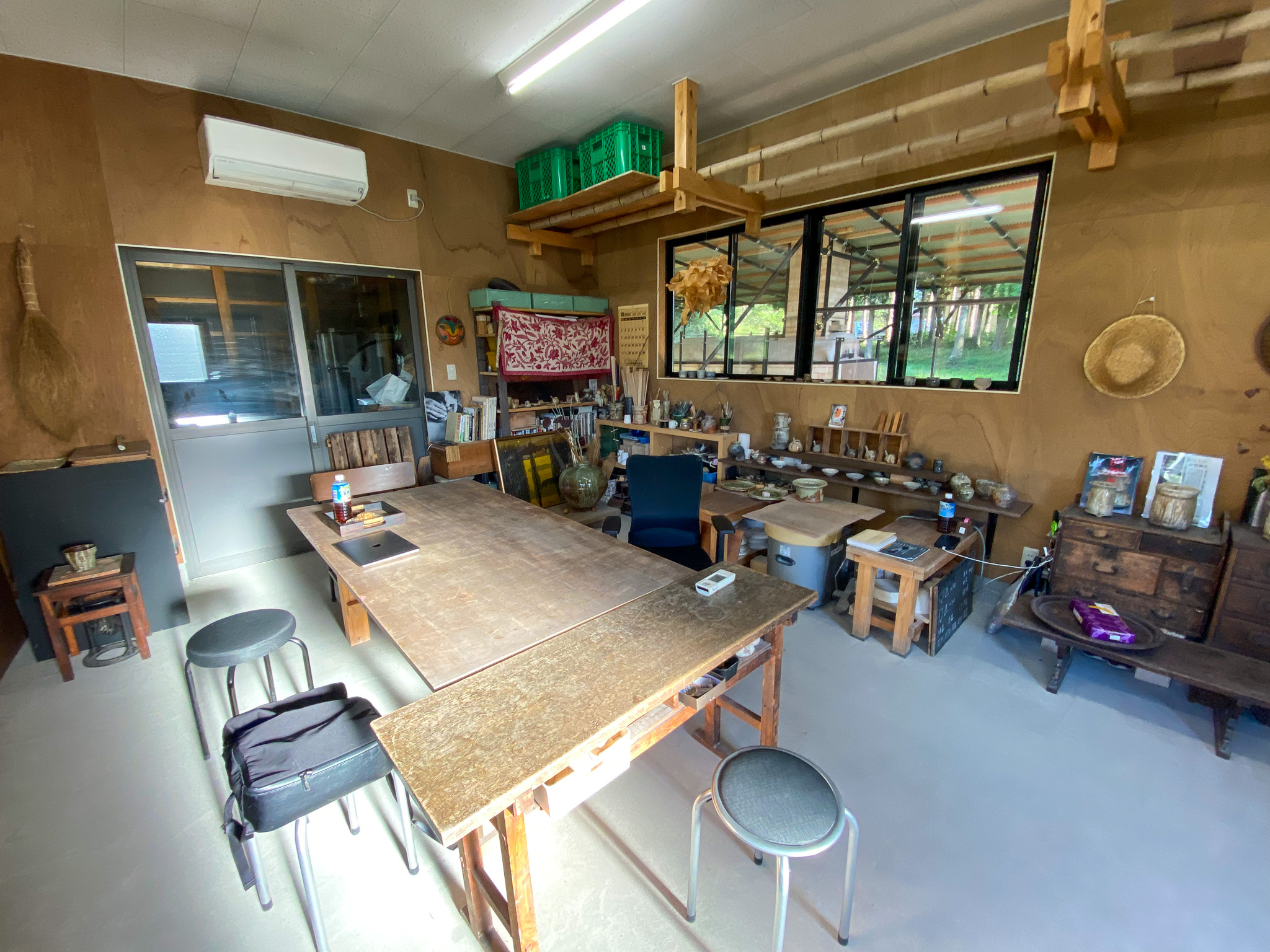
OMBLE :Thank you very much for reading to the end.
Yuko Sugama is an independent potter who creates her works in Iga, a city known for its rich seasons, in a beautiful studio with a warm atmosphere created by sunlight streaming in from the mortar floor and wood.
I empathized with their commitment to smokeless kilns and environmental considerations, and learned a lot from them, which made me feel that I would, and must, adopt these practices.
His powerful yet somehow gentle and warm works surely emanate from his personality.
